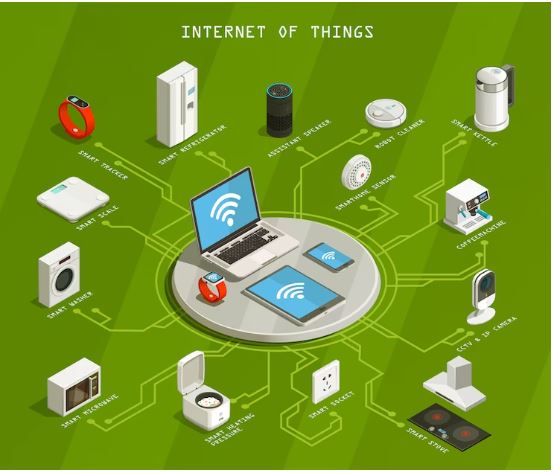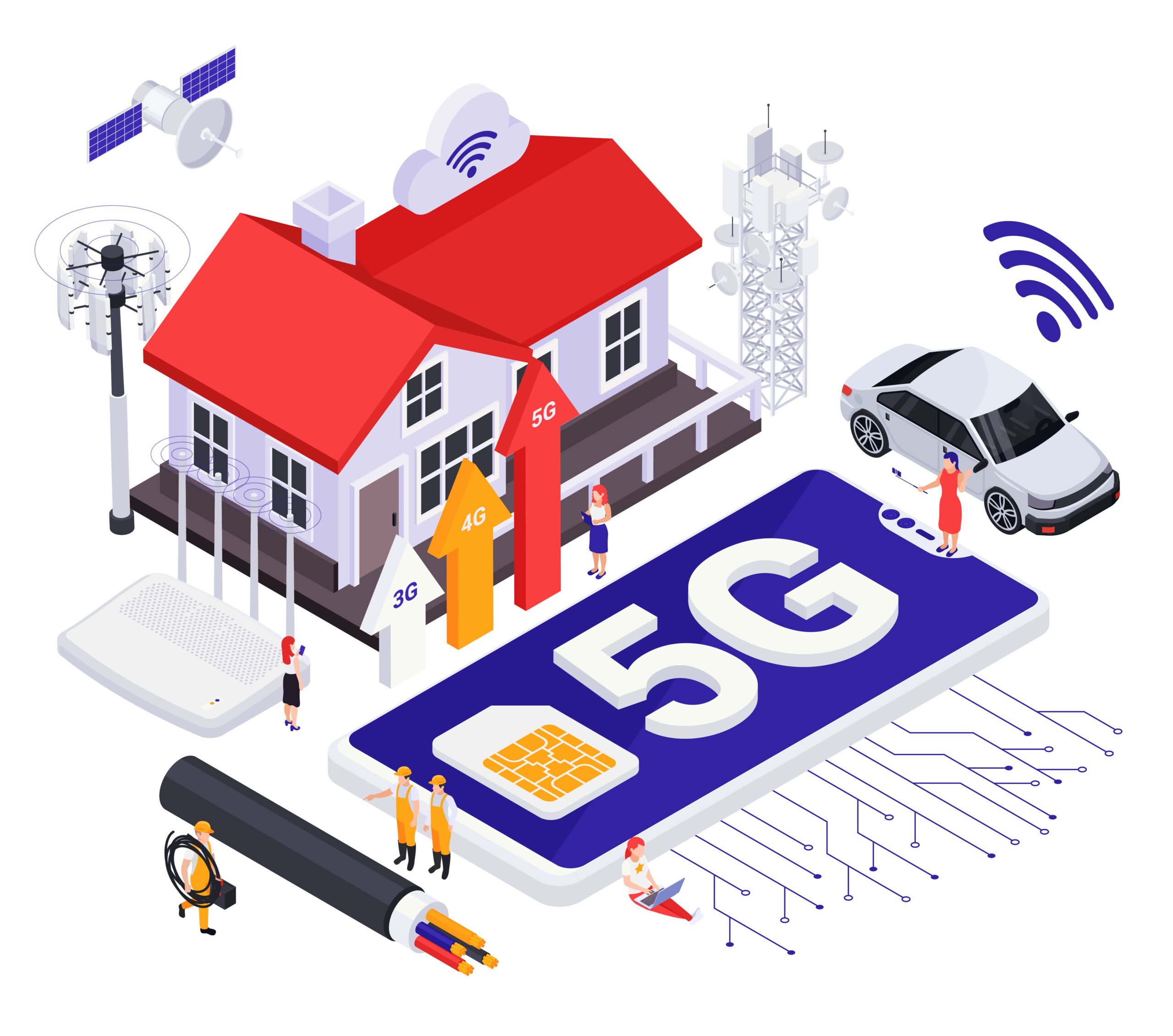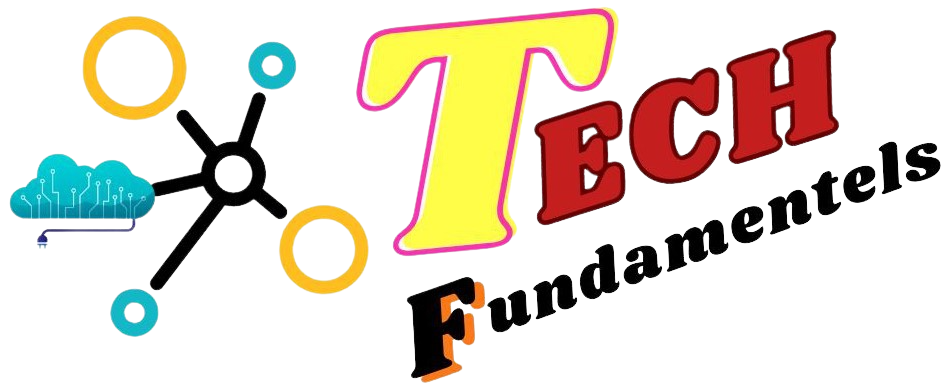Table of Contents
Introduction of Internet of Things (IoT)
In this article we learn about how does 5G technology enhance internet of things (IoT) ?The Internet of Things (IoT) has changed the way we interact with technology by connecting multiple devices and allowing for wireless communication. In this post, we will look at how 5G technology advances IoT capabilities and what is 5G technology by outstanding connectivity and opening an infinite number of possibilities.
Definition of Internet of Things (IoT)
The Internet of Things is a network in which multiple devices are connected with each other to communicate and share data via the internet. These devices include everything from smart kitchen gadgets to smart watches and industrial equipment.

Features of (IoT)
• Importance of Connectivity in the Internet of Things Ecosystem
Connectivity lies at the heart of the IoT the natural world, allowing devices to easily share and analyze data. IoT devices is running as very more smoothly with greater connectivity and allowing for automation and smart functionality.
• Evolution from Previous Generations (3G, 4G)
5G technology develops on the ground-work established by its previous innovation, 3G and 4G. While 3G allowed for mobile internet access, 4G increased data transmission speeds and 5G accelerates this trend by providing faster speeds, lower latency and increased network capacity.
• Key Features and Capabilities of 5G
5G technology’s primary features and capabilities include ultra-fast speeds, ultra-low latency, huge device connection, and network division. These capabilities enable IoT devices to conduct activities in real time, fostering a more integrated digital ecosystem.
When we compared to previous wireless technologies, 5G has some significant advantages like higher data transmission speeds, lower latency, better network capacity and improved reliability. These advantages are critical in moving the Internet of Things (IoT) forward and opening up new opportunities for innovation.

5G is the most recent generation of wireless communication networks, after 4G. It provides faster speeds, lower latency and increased capacity, changing how we connect and involve with the digital world.

The collaboration Between 5G and IoT
The combination of 5G with IoT opens the way to major advances in a variety of industries. Let’s look at how 5G technology supports and improves the IoT ecosystem.
• Exploring the Intersection of 5G and IoT
To efficiently communicate and exchange data, IoT devices depends mostly on modern connectivity technologies. IoT devices may effortlessly connect and exchange information in real-time using 5G technology, enabling efficient and intelligent decision-making.
• Why IoT Relies on Advanced Connectivity Solutions?
5G technology connects with the Internet of Things by providing the infrastructure required to meet the huge communication demand of IoT devices. 5G unlocks the true potential of IoT applications and services by providing faster and more dependable connectivity.
• Leveraging 5G for the Growth of IoT Applications
The possibilities of 5G are significantly benefiting the growth of IoT applications. Real-time data processing and analysis become possible with faster speeds and lower latency, enabling IoT apps to provide increased functions and experiences.

Enhanced Connectivity for IoT Devices
One of the most important characteristics of 5G technology is its ability to improve connectivity for IoT devices. Let’s see at how 5G technology improves the networking experience for IoT.
• Faster Communication with 5G
With its ultra-fast speeds, 5G technology allows IoT devices to communicate and transfer data seamlessly. This enables real-time interactions between devices and facilitates response times, enhancing the overall IoT experience.
• Expanded Network Capacity to Numerous Devices
5G networks offer strongly more capacity than their before it, allowing them to support a huge number of IoT devices. This increased network capacity is critical for the spread of IoT throughout sectors and daily life.
• Low Latency and Improved Reliability for Uninterrupted Connectivity
5G technology has ultra-low latency, which reduces time and ensures continuous connectivity for IoT devices. This is important for critical IoT applications like self-driving cars and remote healthcare, where real-time answers are critical.


Advance Data Transfer Rates
Data transfer efficiency is critical to the success and efficacy of IoT applications. Let’s look at how 5G technology increases data transmission rates, reducing blockages and increasing data-intensive IoT applications.
• Overcoming Data issues with 5G
Previous wireless technologies were limited in their ability to carry huge amounts of data fast. This difficulty is noticed by 5G technology, which provides much faster data transmission speeds, ensuring that IoT devices can handle the large amounts of data they generate.
• Enabling Real-Time Data Processing and Analysis
Real-time data processing and analysis are critical in many IoT applications. 5G’s higher speed and low latency enable real-time decision-making, allowing IoT devices to perform tasks efficiently and in real-time.
• Empowering Data-Intensive IoT Applications
Certain IoT applications, such as smart cities and industrial automation, generate and require large volumes of data. 5G enables these data-intensive IoT applications to work seamlessly and effectively by providing faster data transfer rates.

To realize the importance of 5G technology in increasing IoT, it is necessary to understand its progress from previous generations as well as its major features and capabilities.
IoT Deployments
The capacity to grow of IoT installations is a critical factor for measuring IoT solution success and wide acceptance. Let’s look at how 5G technology makes it easier to create large-scale IoT networks across sectors.
• Supporting a Large-Scale Deployment of IoT Devices
5G networks can support a large number of IoT devices at the same time. This scalability is extremely useful for sectors that rely on deploying hundreds or even millions of devices to build interconnected IoT networks.
• Enabling IoT gain across Diverse Industries
The introduction of 5G technology increased the spread of IoT across several businesses by facilitating effective connectivity options. Industries can exploit the power of IoT on a large scale, enabling innovation across sectors ranging from smart agriculture to transportation and retail.
• Scalability Benefits Offered by 5G Networks
The flexible advantages of 5G networks play a critical role in enabling the growth and expansion of IoT deployments. As the number of IoT devices grows, 5G technology ensures that the underlying network can scale smoothly to meet the increased demand.
• Powering Smart Cities
To improve the quality of life for its citizens, smart cities depend on modern connectivity technologies. Let’s look at how 5G and IoT integration affects urban infrastructure and improves public services.
• Transforming Urban Infrastructure with 5G IoT Connectivity
The merging of 5G and IoT transforms urban infrastructure by enabling effective resource management, optimizing energy use, and improving transportation systems. Cities may become more sustainable, efficient, and responsive to the needs of their residents by utilizing smart technologies.
• Revolutionizing Healthcare
The developments generated by 5G technology in the IoT environment will benefit the healthcare business greatly. Let’s look at how the combination of 5G and IoT transforms healthcare procedures and improves patient care regularly.


